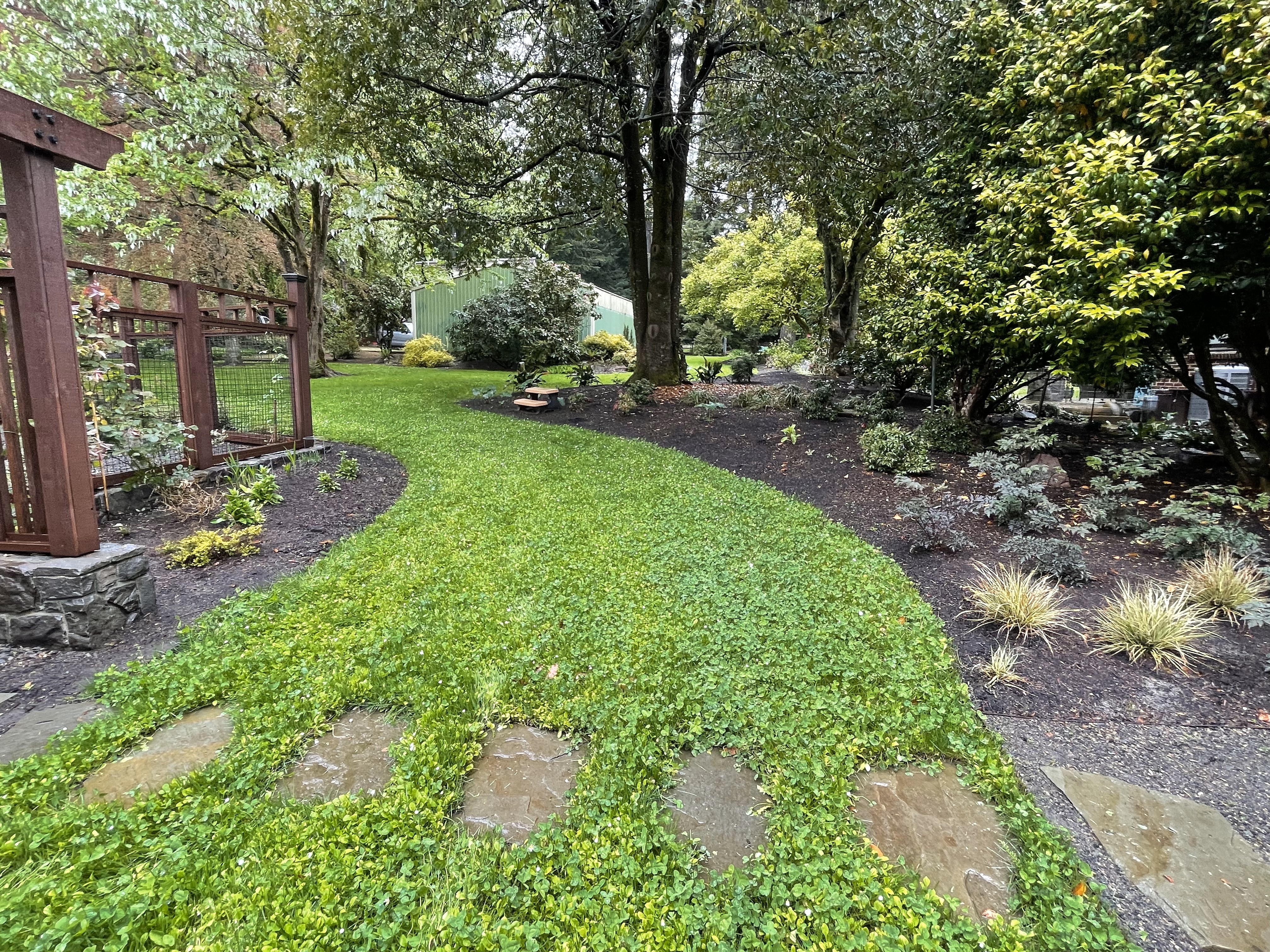Lawn Alternatives
March 2025
Traditional perfectly manicured deep green lawns are becoming less popular these days. While the effect may appear effortless, they in fact take countless hours to maintain: frequent mowing, watering, fertilizing and spraying herbicides and pesticides. All of this can cost a lot of money! If that wasn’t bad enough, it is also very hard on the environment.
So, what are people replacing them with?
Lawns are sometimes replaced with eco-lawns. Eco lawns can be comprised of shorter growing, drought tolerant perennials (like chamomile, yarrow and clover) mixed with drought tolerant fescues or low-mow grass mixes, and taller growing native grass species with deep roots that can be left to flop over or be mown once or twice a year. Their deep roots aerate the lawn, improve soil drainage and water retention, and make them more drought tolerant than traditional fine fescues. If you let the perennials flower, pollinators will flock to the yard.
In less manicured parts of the yard meadows can be a lovely alternative, embracing taller native wildflowers. While these meadows require less water and fertilizer than traditional lawns, they can be difficult to establish and maintain. Today there are so many invasive species that are constantly trying to creep into “wild areas” that these meadows still need to be carefully established and tended to keep out invaders.
If the area being converted won’t see much foot traffic, you can look at alternative groundcover solutions. Popular sun drought tolerant groundcovers are creeping thyme, sedums, hens and chicks and Kinnikinnick. Liriope or Mondo Grass can look very similar to grass and spread through rhizomes (aka roots). The benefit is these bloom, are deer resistant, and don’t require mowing. There are endless options for blooming ground cover in the sun and shade. Designers have their work cut out for them to pick the best option for the site based on water needs, light requirements, desired mature height and overall style of the garden. If you aren’t relying on a designer to help you pick out the right groundcover, just be careful not to pick invasives. Check Portland’s Noxious Weed List and ask your local garden center for guidance.
Finally, lawns can be reduced or eliminated and replaced by larger planting beds, pathways, patios, raised garden beds or water features. For this option, it’s best to hire a landscape architect or landscape designer to help you re-design your yard. It takes expertise to re-configure the space and cohesively coordinate the new layout.
Remember, don’t feel like you’re stuck with the lawn you’ve inherited. There are many ways you can replant and re-configure the space depending on how you plan on using it, the size of the space and budget. A landscape architect can help navigate through the decision-making process based on your goals and come up with a water-wise, eco-friendly garden solution. Happy gardening!
 |
